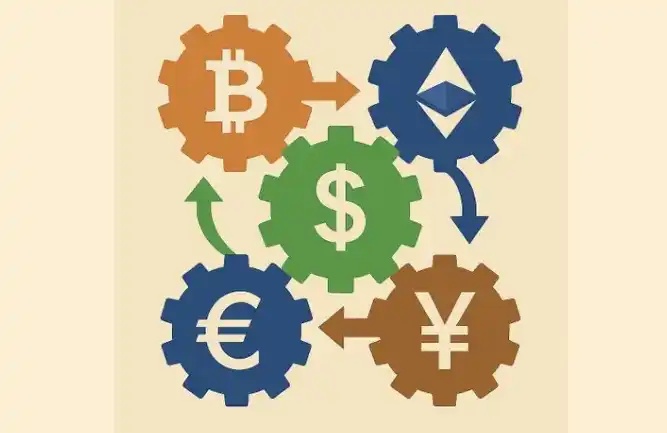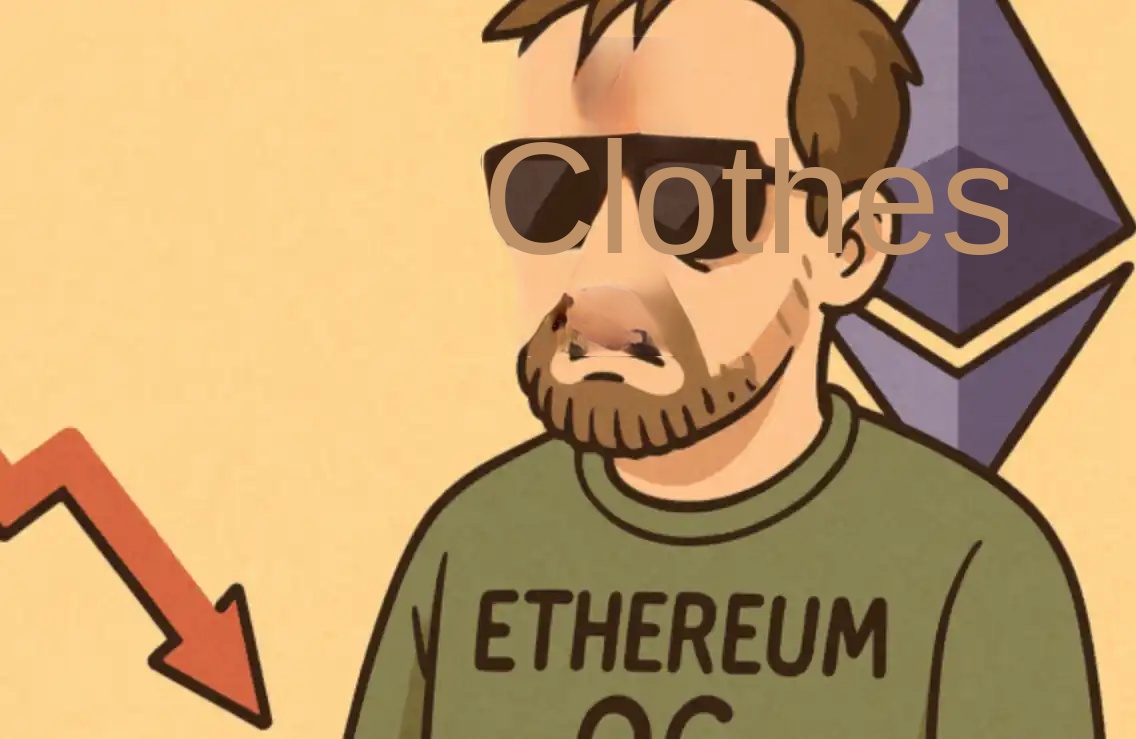1confirmation Founder Voices Support for Ethereum and Vitalik: ETH Is Severely Undervalued
Original Title: Money, Blockchains and Social Scalability v2
Original Author: Nick Tomaino, Founder and General Partner at 1confirmation
Original Translation: Helsman, ChainCatcher
Editor's Note: Recently, there has been a lot of FUD in the community regarding Ethereum, as well as intense discussions about the benefits of Layer 2 and the mainnet. Nick Tomaino, Founder and General Partner at 1confirmation, published a post in support of Ethereum and Vitalik. He reexamined Ethereum from the perspective of social scalability, highlighting its role and potential significance as a trusted neutral, internet-native store of value. He pointed out that while Bitcoin has been actively embraced by the mainstream financial market and government, ETH could also prove to be more socially scalable than BTC.
Social scalability refers to a system's ability to allow more people to participate and achieve win-win outcomes. This is also a key reason why the cryptocurrency market has become a $2.9 trillion asset class today. In this article, I will explain what it is and why it is important.
In 2017, cryptographer Nick Szabo published an article titled "Money, Blockchains and Social Scalability," describing Bitcoin as a social breakthrough, which has now become a must-read article. While most people view cryptocurrency purely as technology and focus on technical scalability, I agree with Szabo that technical scalability does play a role in social scalability, but it is not the main factor. The biggest winners will be those cryptocurrencies that achieve social scalability through the most trusted neutrality and providing the greatest utility.
Bitcoin's Social Scalability
Bitcoin is the first trusted neutral, internet-native store of value that is useful to people in the United States, China, Russia, Brazil, and hundreds of other countries worldwide. When I say "trusted neutrality," I mean fairness, impartiality, and being free from influence by minority groups. Trusted neutrality is a social construct, usually rooted in technology but ultimately based on various dynamic factors that impact human trust.
Trusted neutrality is something that the protocol earns over time but was initiated by humans. Bitcoin was launched as open-source software, allowing anyone to read, run, write to, and own it in a fair competitive environment. Its launch was fair. There were no premines, no celebrity endorsements, no corporate affiliations, and no ties to any nation-state. The rules were set from the start and have not been changed. The community openly discussed everything on forums like Bitcoin Talk. To understand its ethos, one can read early posts by Hal Finney.
The trusted neutrality and practicality of Bitcoin have been key drivers of the cryptocurrency industry's development. Initially, it was a grassroots movement initiated by the pseudonymous founder Satoshi Nakamoto, not owned by any individual, and not subject to any region's jurisdiction, providing a new product that anyone in the world could use. Today, it has grown into a $1.7 trillion asset, with some of the world's largest governments and companies actively adopting it as a store of value. The rules of the Bitcoin system remain difficult to change, which is one of the key reasons for its continued adoption.
Bitcoin's growth has been remarkable, but cultural decisions made by the early community—solely focusing on currency—have limited the development of new Bitcoin developers and companies using it for more than just currency. Despite extremists emphasizing Bitcoin's orthodoxy over the past 15 years, decentralized systems still have tremendous opportunities to bring more freedom and progress beyond currency to the world.
Is Social Scalability Really Important?
Social scalability is a key factor in Bitcoin's success, but by 2025, the importance of social scalability may be questioned. Today, out of the top 9 cryptocurrencies by market capitalization, 4 are effectively company coins (XRP, BNB, SOL, TRON). The total market capitalization of these 4 coins exceeds $312 billion.
These tokens have strong narratives but have yet to gain reliable neutrality. Small teams have launched these tokens from well-known jurisdictions (Silicon Valley, the US, and China) and allocated over 50% of the tokens to insiders (the founding team and/or venture capital firms). They have highly coordinated marketing efforts, with insiders involved in government lobbying and engaging in a large amount of corporate-style top-down activities. These protocols have not yet proven to be resilient, secure, or anti-fragile. At the cost of sacrificing decentralization, they have made aggressive trade-offs for performance.
We can discuss their practicality—some may argue that these 4 protocols are useful, but they have not enabled new use cases or broader adoption. Nevertheless, the approach taken by these 4 protocols has been very effective. It can also be said that they have been successful in capturing value, and it has little to do with the so-called social scalability.
However, in the long run, social scalability is crucial and will bring $20 trillion in value growth over the next decade. This is why we insist on being here. Time will reveal the truth, and things will change. If you do agree that social scalability is crucial and look at the facts, it is quite evident that only two cryptocurrencies have both reliable neutrality and practicality to achieve long-term social scalability: BTC and ETH.
BTC Dominates the Throne, but ETH Could Prove to Be More Socially Scalable Than BTC. Here's Why:
ETH's Trust Neutrality
Similar to Bitcoin, Ethereum's trust neutrality has been present from the start. While Ethereum does not have Bitcoin's "fair launch," with only 9.9% of the supply allocated to insiders, anyone in the world can easily acquire ETH by sending BTC to the ICO address. There were no insider deals with venture capitalists, no celebrities, companies, or nations involved.
Ethereum also started as a proof-of-work (PoW) chain and remained PoW for the first 7 years to ensure a more equitable distribution before transitioning to proof-of-stake (PoS). You didn't need to own or buy ETH to participate in consensus and receive rewards at the outset; you just needed to contribute hashing resources. The transition from PoW to PoS is unique and underrated. It helped Ethereum engage with a diverse set of stakeholders early on and allowed a broader audience to participate in consensus and earn ETH rewards today.
Ethereum's founder is Vitalik Buterin. Some critics may question Vitalik's leadership and argue that having a known founder with significant power undermines trust neutrality. However, Vitalik's leadership style is transparent and authentic, laying the cultural foundation of Ethereum by emphasizing trust neutrality.
You won't see Vitalik shilling investment stories like many prominent figures in the crypto space, chasing money, attention, and power. For over a decade, he has been one of the most capable of doing so in the industry but has refused. Instead, he operates in his own way, focusing on values such as resistance to censorship, inclusivity, and transparency, primarily concentrating on setting the best long-term technical architecture and values for builders.
In fact, Bitcoin's and Ethereum's governance models are alike. Protocol changes require rough consensus from miners, users, and developers, so Ethereum's change pace is much slower than many VC-type expectations. However, in the long run, this contributes to achieving more dependable neutrality, a trade-off intentionally made by Ethereum's leadership.
The Ethereum mainnet currently has 4 execution clients (Geth, Nethermind, Besu, and Erigon) and 5 consensus clients (Prysm, Lighthouse, Teku, Nimbus, and Lodestar) actively maintained. Client diversity and avoiding single points of failure
has always been a focus of attention. Furthermore, the mainnet and L2 EVM environment have become the most trusted development environment for developers and companies.
Today, Michael Saylor's entity-owned BTC supply is much larger than Vitalik's and the Ethereum Foundation's ETH supply. The Bitcoin leader has advanced further by supporting politicians and lobbying to quickly ally with governments. This may be the result of Bitcoin going further than Ethereum and attracting a wider range of stakeholders, which may appear to benefit Bitcoin.
However, the risks of damaging trust neutrality through Michael Saylor and government lobbying are real. In contrast, Vitalik and the EF resist the temptation to react to the market environment by chasing investment narratives. The Ethereum leadership focuses on builders, making Ethereum much larger now than any individual or group. The most important people for Ethereum's future may be these unsung builders.
Ethereum's Utility

Since Bitcoin introduced the world to a trust-neutral, Internet-native store of value, Ethereum has consistently captured developers' attention and has been the birthplace of every major new crypto use case beyond money, significantly onboarding newcomers to the crypto space. Ethereum is the home to specific use cases such as decentralized finance (DeFi), non-fungible tokens (NFTs), prediction markets, decentralized social networks, decentralized identity, real-world assets (RWAs), stablecoins, and more. All these new use cases, by distributing EVM wallets and ETH, leverage Ethereum's trust neutrality and store of value features.
Some of these use cases originated on the Ethereum mainnet and are now gradually transitioning to L2 chains built on Ethereum. Developers prefer a trusted developer environment that offers them more control and better economic incentives than L1, which is exactly what the Ethereum L2 architecture provides. Developers building on L2 or L3 not only get more engagement but also benefit from Ethereum's security, the network effect of the EVM, and the expansion of ETH's consensus as a trust-neutral, Internet-native store of value. While developers of certain use cases may prefer to stay on the mainnet, after all, the mainnet's liquidity advantage is something L2 cannot provide. Both outcomes are beneficial for ETH.
There has been much debate about whether L2 adds value to ETH or damages ETH's value by cannibalizing mainnet fees. Standard Chartered recently reduced its price target for ETH from $10,000 to $4,000 based on Coinbase's L2 Base cannibalizing mainnet fees. This view overlooks the bigger picture.
The main benefit of L2 is not to contribute fees to the mainnet, but to expand Ethereum's consensus as a trustworthy, neutral, internet-native store of value by distributing EVM wallets and ETH. The ETH supply can decrease based on the usage of the Ethereum ecosystem (including the mainnet and L2), a feature that has made ETH more deflationary than BTC, which is a nice feature. However, fees are not the main advantage of applications and L2.


Ethereum Dominates in Stablecoins, RWAs, and NFT Use Cases
Ethereum is now the primary ecosystem where new developers and large companies (such as JPMorgan Chase, BlackRock, Coinbase, Robinhood, etc.) tokenize assets. Its ecosystem is increasingly expanding from NFTs and native crypto assets like tokens to traditional assets such as USD, government bonds, stocks, bonds, private credit, real estate, etc. Whether these activities take place on the mainnet or L2, and regardless of how much L2 eventually pays in fees to the mainnet, it will impact the scale of ETH burned. However, even if all these activities occur on L2 and L2 pays minimal fees to the mainnet, the adoption of these use cases will still expand Ethereum's consensus as a trustworthy, neutral, internet-native store of value.
A $100 Trillion-Plus Opportunity
A trustworthy, neutral, internet-native store of value is the largest market opportunity in the world today. The total market value of gold is around $20 trillion, and the global M2 (broad money supply) is around $100 trillion, making it a market opportunity of over $100 trillion.
Cryptocurrencies that achieve social scalability through trust neutrality and usability are best positioned to capture this opportunity. The current narrative around this point is not strong, but from my experience in life and crypto, the stronger the narrative, the further from the truth (and vice versa). Those who stay focused and are not swayed by the hype will be rewarded.
Welcome to join the official BlockBeats community:
Telegram Subscription Group: https://t.me/theblockbeats
Telegram Discussion Group: https://t.me/BlockBeats_App
Official Twitter Account: https://twitter.com/BlockBeatsAsia
 Forum
Forum OPRR
OPRR Finance
Finance
 Specials
Specials
 On-chain Eco
On-chain Eco
 Entry
Entry
 Podcasts
Podcasts
 Data
Data

 Summarized by AI
Summarized by AI







